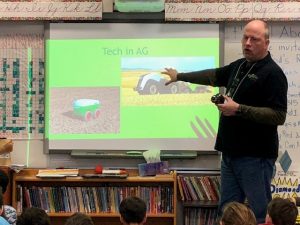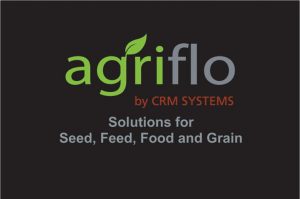Technology and Agriculture

Technology and Agriculture

Technology has drastically impacted Agriculture in many different ways over the last several years. Examples of this impact can be seen with the use of drones by farmers, Real-time analytics that can be pulled from precision Agriculture and even in Agri-processors who have Automation in their facilities to help receive grain with more efficiency.
With new technology moving in fast for Agri-Processing there is definitely an informational gap occurring between the processing plant and the office. This can detrimentally impact the company’s bottom line. This separation is like a fog (or White Space), where you and your employees really do not know what is happening in the fog at any given point in time.
Delays can impact:
- People
- Process
- Tools
These delays can be reflected negatively in inventory accuracy, operational efficiency or even compliance and food safety issues. Any of these problems are cause for concern , but what really hurts the processor is the inability for real-time decision making.
Communication:

Communications need to be linked between the plant and the office because when they are not your company creates White Space. With white space, a company’s communication becomes very “silo’d” with “me” centric tools and this can cause disjointed workflows. A great example of “me” centric tools are email clients such as Outlook or Outlook 365. These programs serve a purpose in our individual workflow and help us in our day-to-day flow, but as a team platform they can be quite limiting. The “me” centric tools cause a huge amount of repetition work, where employees are touching items 4-5 times, or reworking and reworking in order to push items forward. This cycle can lead to frustration at the end of the day, processes can be stalled and employees can feel that they are on a never ending treadmill with no forward momentum to complete tasks.
By connecting your “me” centric tools to workflow automation, accounting systems and even to your Customer forward facing CRM (Customer Relation Manager), it can improve your communication 10 fold, and allow you to be more proactive in your decision making.
Workflow:
If there is White Space between the Processing plant and the office there will be a definite impact on workflow. Delays in processing can impact the bottom line or the company’s key performance indicators (KPIs). The goal becomes reducing white space by connecting the tools, processes and people to the workflow.
This can be achieved by integrating existing tools to help you with the interoperability of the company. Or by reviewing your current needs and looking at your future needs to help you find tools that may be a better fit for your company. By closing the loop of the workflow, it will allow you to lean out processes, empower your people and more importantly, grow your business.
Getting rid of, or reducing White Space can be a challenge because of processes that may not have changed in several years or may be from a time where you were managing your business with much smaller sales volume. If so, this is the best time to review your processes, and see what needs to be changed, improved or even removed. If your company is planning to change processes one key point that will ensure higher rates of success is to engage your employees and team members in this process. They have the experience and likely know better than anyone else, what already works and what doesn’t.
Technology:
Challenges that can make existing problems worse is when a company runs to Technology and throws it at their problems hoping that it is a quick fix. This is a dangerous decision and often leads to failed technological implementations, or high staff turnover. If new technology is the solution for your company then it is wise to slow down before you speed up. There has to be a deep drive to review your company’s needs (People, Process and Tools). Luckily, there are tools that can help you with this review and will give you the extra knowledge to make an informed decision. It is always better to change things in small bite size pieces so that you can really see the outcomes and it will also provide your company time to adjust without hurting your business.
Agriflo Supports Agriculture In The Classroom

CRM Systems is a proud supporter of Agriculture in the Classroom [Manitoba]. Our very own David Lapp, shown here teaching on technology in Ag. Children have an inherent interest in plants and food, and this is a great way to bring agriculture professionals directly into the classroom – to teach, inspire and answer questions.
Agriculture in the Classroom–Manitoba (AITC-M) has been operating since 1988. AITC-M delivers curriculum-based programs, activities and resources for teachers and their students to learn more about agriculture and the role it plays in our province. AITC-M is part of Agriculture in the Classroom-Canada, click here to find out more.
AITC-M is a non-profit, charitable organization supported by sponsors and members who share the organization’s goal. Executive Director Sue Clayton works with the Board of Directors, staff, members and volunteers to develop and deliver the programs to Manitoba schools.
AITC-M’s Board of Directors is an elected board that represents a cross section of the industry. There are 15 members who exhibit a commitment and dedication to delivering an accurate, balanced and current message about agriculture. This is AITC-M’s ABC principle and it is on the membership’s behalf that the organization demands accountability to it.
The AITC-M organization will promote the development of critical thinking skills related to the businesses of agriculture, food, bioproducts and life sciences in all Manitoba students. In coordination with commodity and other industry related organizations, AITC-M’s programming, events and services will further develop future decision-makers and entrepreneurs.
Vision: Agriculture in the Classroom-Manitoba Inc. will lead in the development and distribution of accurate, balanced and current information for use as education resources in school curriculum.
AITC-M’s Core Objectives:
• To enhance awareness of agriculture in Manitoba schools
• To develop an appreciation and awareness of the importance of agriculture, socially and economically
• To explain the process of food and fiber production from farm to consumer
• To inspire interest in agriculture and agriculture careers
• To provide a supporting role to Manitoba Education and Literacy in the linkage of accurate agriculture resources to existing course curriculum
• To work collaboratively with industry partners to develop engaging, interactive agricultural experiences for youth
• To develop resources and programs with the guidance and expertise from agriculture and education communities
AITC-M has a variety of programming designed to create links between agriculture and the classroom. All our programming can be customized to meet a particular need, or we’ll work with partners to develop a new program.
Contact CRM Systems if you are interested in having us present to your school, club or troop.
CRM Systems supports several different community organizations, and we are always interested in finding more good organizations to partner with.
Why should we connect?

There are many different types of challenges facing those of us in Agribusiness; we have challenges with Customers, Producers and even getting our product in and out in a timely manner. Our decisions have to be quick and accurate, which means that our decisions have to be made in real time. The world appears to be speeding up and our decision making has to follow. The biggest problem is what information do we need to make real time decisions? You may have heard of concepts like Big Data, Internet of Things, connectivity, inter-operability and Industry 4.0. Which are the ones you should consider?
1) Connectivity:
In order to gather the best information, we need to make sure that we are connected. This works best in closed loop systems so that all the important information is being captured. In recent years the ability to have a closed loop system has become far easier with PLC (Programmable Logic Controllers) and Automation Controls on the farm and in the processors’ plant. If you haven’t already connected these areas then it should be a top priority, because once you connect these areas together it will allow you to understand how your company is working.
An issue of connectivity is that there can be a shifting constraint. A shifting constraint occurs when you start connecting the pieces to close the loop and unsurprisingly problems will be found in your current processes, these are the shifting constraints. As you tackle and resolve the constraints as you discover them you may notice a shift to a new constraint. This eye opening process will be resolved once all the problems are corrected, allowing a much more efficient process for your everyday activities. This may be a little bit scary or may take some time and effort from employees and management, but I always tell people it is better to slow down in order to speed up. The result will be totally worth it.

2) Inter-operability:
Inter-operability is different from connectivity because it may not be a seamless integration. The concept of inter-operability is knowing that you have data that could be used in your decision making but realizing that you may have to pull this information from the source using third party tools or the ability to export. This can be a small extra step. However, implementing this type of communication strategy, even if they are third party tools will allow you to get information and data that can be vital when making rapid decisions and allows you the ability to stop relying on historical information.
These types of solutions can have challenges because sometimes the pieces may not be able to pull the information that you really need or want. This is when a cost benefit will have to be examined and a decision will have to be made about if it is worth while to make small changes and put something in place to help with the capture of information. Or do you leave it until it makes sense to change in a big way. In either scenario, you will need to be gathering information to help you decide.
3) Big Data:
Big Data is a very popular concept in the business world today. The idea that we should always be plugged in and pulling information from all the sources we can is pervasive and encompassing. The idea is that – More information is always better! However, is this actually true? Sometimes this is not always the case. Companies and Individuals can experience a situation called Analysis Paralysis. This occurs when we are getting too much information and then we can not even fathom where to start. I have come across this situation multiple times, people believe that if they pull every bit of data that they will find some pattern, or trend that will give them the “A-ha moment” to solve their problems.
However, the trick to Big Data is knowing what we need to measure and then to start from there! Even if we only focus on our top three issues in our business, imagine how much of a benefit that would be! In this case you could actually do more with less!
In closing the key to success in connectivity and Big Data is to start small and work towards your goal! By taking off bite size pieces, it makes the goal of true connectivity achievable for any company.
Self-Service Web Portal
 agriflo includes a highly functional self-service portal that can be used for customers, vendors and other 3rd parties.
agriflo includes a highly functional self-service portal that can be used for customers, vendors and other 3rd parties.
The portal is fully functional on Desktop, Laptop, Tablet and mobile devices.
Log in, update bin inventory, check on contracts, bookings and more. Update contact information – even check on the status of your payments. Its all possible with the agriflo Self-Service portal.
This short video explains some of the portal’s capabilities:
Producer / Vendor Settlement
 agriflo by CRM Systems includes highly configurable, but easy to use producer settlement functionality. This functionality builds on the producer contracting functions in agriflo and can handle virtually any settlement terms and conditions.
agriflo by CRM Systems includes highly configurable, but easy to use producer settlement functionality. This functionality builds on the producer contracting functions in agriflo and can handle virtually any settlement terms and conditions.
The result is virtually effortless settlement, while not sacrificing the ability to make individual override adjustments when appropriate.
agriflo also generates CGC compliant scale tickets to finish the process off.
This short video explains the settlement process.
Receiving Commodities

agriflo by CRM Systems includes easy to use commodity receiving functionality that is accessible from within the Sage CRM environment.
Receipts can be processed based on bookings, or without bookings – depending on what is appropriate. The process is designed to be fast, easy, and virtually error proof, especially if you have control system or truck scale integration enabled.
This short video explains the receiving process.
Scheduling / Booking Inbound Commodity Receipts
 agriflo by CRM Systems includes easy to use receipt booking functionality that is accessible from within the Sage CRM environment.
agriflo by CRM Systems includes easy to use receipt booking functionality that is accessible from within the Sage CRM environment.
Booking your receipts in advance expedites operations at the sale, reduces the potential for error, and allows the Logistics manager to separate responsibilities for booking and receiving across two separate team members.
This short video explains the booking process.
agriflo by CRM Systems is launched at Grainworld 2017!

We are very happy to announce the official launch of agriflo by CRM Systems! We are proud to launch this exciting new solution for the Seed, Feed, Food and Grain industries corresponding with the Grainworld 2017 conference in Winnipeg, MB! [www.grainworldconference.ca]. Thank you to the people at Farm at Hand for their kind assistance and generosity as we have prepared for the event.
agriflo is the result of years of design, implementation and planning. It is a consolidation of a number of widely deployed technologies from Sage Software [www.sagesoftware.com] and other technology providers, and is built on a fully modern technology platform, utilizing best practices to allow businesses in this market to move beyond traditional business models and into the future – as seamlessly as possible.
Have 5 minutes? Watch this informative introductory video on “What is agriflo?”. It will tell you more than this written blog could! And then after watching it – make plans to come down to our agriflo launch event, happening November 15, 2017 from 4-7pm at the Shark Club, City Place, across from the RBC Convention Centre, where the Grainworld Conference is being held. Food and drinks are on us! See you there.
Read More
